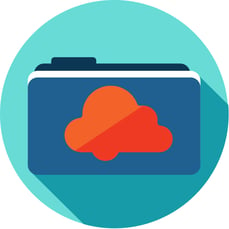How You Can Improve Patient Care with EHR Software
Whether a patient is in for an open angle glaucoma exam, a contact lens fitting, or pre/post op cataract follow-up, you want to be using a modern EHR software that will enable you to enhance patient care regardless of the situation.
In a recent webinar series, Dr. Ian Lane demonstrated how eyecare professionals could use modern EHR tools to improve the level of patient care they deliver regardless of the exam type. This post explores three of the key ways Ian was able to enhance patient care using modern EHR software.
If you missed the webinars, check out the recordings here:
- Case 1: Documenting a Contact Lens Fitting and Follow-up Care
- Case 2: Documenting Pre and Post Op Cataract Care
- Case 3: Documenting Diagnosis and Treatment of Open Angle Glaucoma
How to Enhance Patient Care with EHR Software
Increase Communication
When you identify a potential issue with a patient, you want to make sure you get them the care they need as soon as possible with minimal interruption to their daily life. This is why it is so important to be able to send a referral letter to the corresponding specialist with as
much detail as they need about the patient in order to do their job effectively.
In the webinar, Documenting Pre and Post Op Cataract Care, Ian demonstrated how EHR software could be used to improve communication between co-managing care teams by leveraging real-time CCI edits and ICD 10 code compilers to create a Continuity of Care Document (CCD). Ian then used these documents and a customized referral template to quickly and securely send a referral request to another healthcare specialist.
Record Accurate Documentation
Proper documentation is essential to maintaining compliance, maximizing claims reimbursement, and improving patient care. However, remembering the correct codes for diagnoses is nearly impossible. Comprehensive EHR software can make it easier for you and your staff to document a patient throughout the exam.
In the enhancing patient care webinar segment, Document Diagnoses and Treatment Initiation of Open Angle Glaucoma, Dr. Ian Lane showed how ODs could use EHR software to record the diagnosis and treatment plan. He used the graphical annotation tool to make detailed, visual documentation of an optical abnormality. Based on the diagnosis, severity, and laterality the EHR software was able to assign the proper ICD-10 code to the image for proper documentation and suggest treatment plans and orders base on best practices. Additionally, Ian uploaded special images from his digital exam instruments directly into the patient profile.
Gain Insight Into Patient History
Having insight into your patient’s medical history will help you form a better diagnosis when issues arise, and to track progress as you administer treatment plans.
In each of the webinar installments, Dr. Ian Lane used the EHR software to dig into the patient’s medical history. With the software, Ian could review:
- Social and lifestyle questionnaire
- Prescription history
- Graphs and charts to track patient vitals
If you want to see how modern EHR software could benefit the patient experience in your practice, then watch this video to see Uprise in action!

